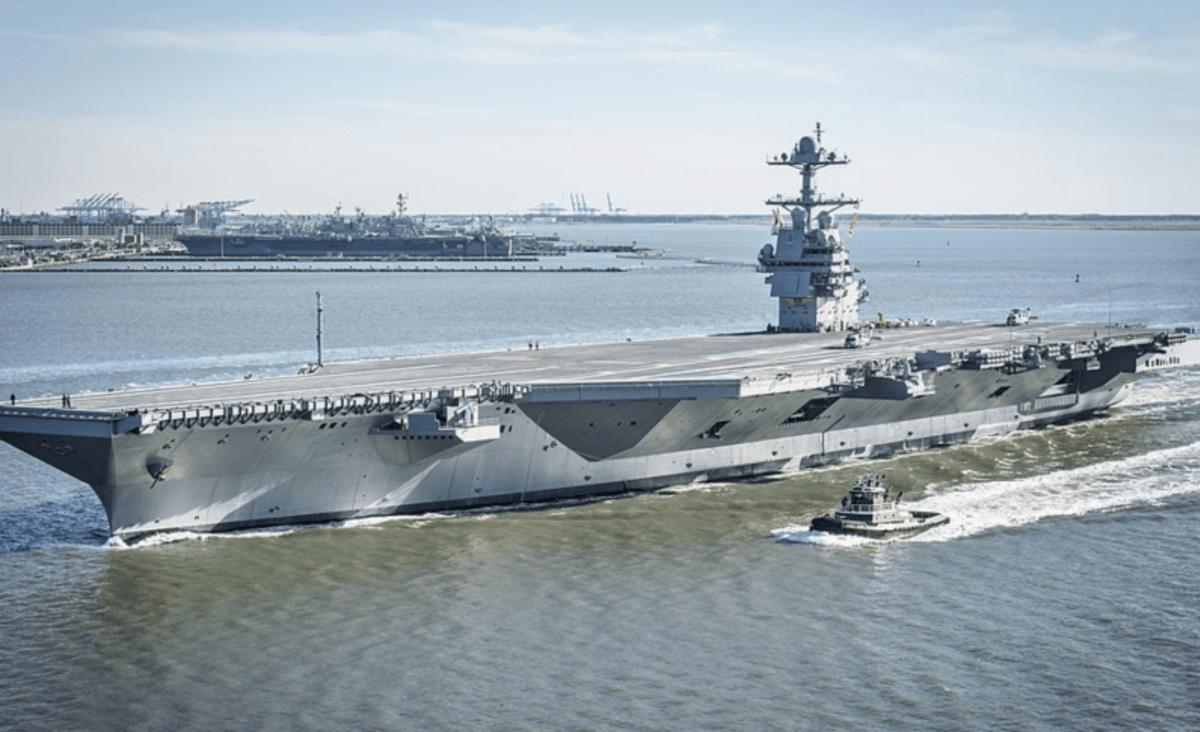
interestingengineering.com
USS Gerald Ford: The Most Advanced Carrier Ever Built with $13.3 Billion Production Cost
The US Navy has not designed an aircraft carrier for 40 years, and now they're working wonders on its upcoming Ford class.
Science & Tech
For four decades, the U.S. Navy had not designed a new aircraft carrier. So, when it took up the task of building the Ford-class carriers, the Navy ensured that it was building the best aircraft carrier it had built so far. The first of its kind, USS Gerald Ford is now closer to taking to the battlefield with some of the most advanced technologies we have seen on a warship.
Honoring Gerald Ford who served the U.S. Navy during World War II, the first vessel of this class of aircraft carriers has been named after the 38th President of the United States. Instead of making incremental changes to its new warship, the Navy spent a good amount of money and time to bring on board the latest technological developments.
Its predecessor, the Nimitz-class carriers, which the Ford-class is designed to replace were built when power requirements on these vessels were limited but with increasing dependence on advanced technologies, the onboard power demand has also increased. Under the hood, USS Gerald Ford now carries two new Betchel A1B reactors that can improve the carrier's electricity generation capacity by as much as 250 percent over conventional carriers, its builders claim.
Along with improving its sensing systems with a multifunction and volume search radar, USS Gerald Ford has also been equipped with stealth features to limit its own detection. The increased flight deck is capable of carrying up to 90 aircraft of different fighter aircraft along with drones.
The Electromagnetic Aircraft Launch System (EMALS) to launch this wide variety of aircraft is one of the noteworthy features of the Ford-Class. Replacing the conventional steam catapult and its moving parts with an electromagnetic launch system is expected to improve aircraft life. An Advanced Arresting Gear (AAG) for landing aircraft is designed to make the landing experience simpler and safer for pilots. These advanced technologies that rely heavily on automation are also expected to deliver considerable savings of over $4 billion over the carrier's lifetime, as it requires a smaller crew.
However, implementing these 'revolutionary' changes into a single aircraft carrier has also been challenging. Under pressure due to time delays, the U.S. Navy accepted the USS Gerald Ford in 2017 but trials of technologies continue delaying the ship's entry into the battlefield to 2022. We previously reported that it was only a couple of months ago that the carrier had completed its full ship shock trials. Even the much-touted EMALS has been marred by cost overruns and although is easier to operate, breaks down often, Bloomberg had reported earlier this year.
With plans to build at least ten carriers in this class, one can only hope that the cost overruns can be arrested as more vessels are built and the huge cost of building these ships is recovered by deterring adversaries at sea.
























































